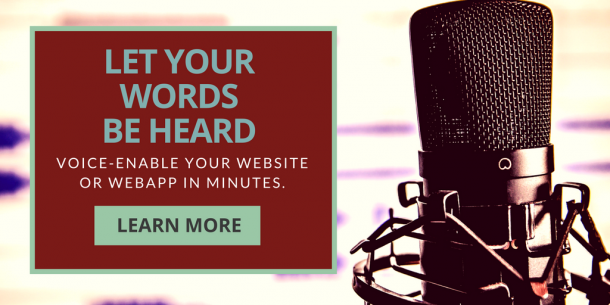An electronic book (e-book) is a publication in digital format for computers and other electronic devices. E-book sales started an upward trend in the 2000s. The convenience of being able to browse by titles, download and access the material instantly from e-commerce sites contributed to its popularity. E-books are also cheaper than the printed material, saving on delivery and printing cost. As of last year, more e-books are published online in the US than books published in the printed form.
E-books can inherently be equipped with Text-to-speech (TTS). However, some e-books are published with Digital Rights Management (DRM) protection. This prevents any text-to-speech software from rendering the e-book content to speech.
Publishers stepped up by producing audio books or talking books online. These are digital content with pre-recorded audio of the content. In essence, an audio book is a performed reading of the content which reflects the pace and emotion of the author’s work.
Preference for audio books and TTS varies based on the individual, the nature of the material, and the intent for its consumption. Although both cater to immersive reading by listening, the experience is different. A well performed and narrated audio book makes the story come alive for the listener. On the other hand, other readers prefer to be able to interpret the content on their own and use their imagination, these are huge motivations for using TTS.
Using TTS, a user has the option to select from a library of different synthetic voices available. The user can also adjust their preferences (the gender of the voice, the pace of reading as few examples).
Audio books and content delivered with TTS are valuable learning and multi-tasking tools. A person can utilize the advantage of being able to listen to content while doing other tasks. However, since most audio books don’t provide the text for the content, TTS becomes more beneficial for assisted learning. For children and people trying to learn a different language, the ability to follow the text while it is being read by TTS helps in the familiarization of the language. Audio books can be more expensive than TTS which is now free and built-in on most devices. Furthermore, TTS can render more forms of digital content such as documents, magazines, and online material.
Understanding the difference between TTS and audio books will help you select the right assistive technology depending on your needs. Many children with reading issues use both technologies based on the type of reading they need to do.
Since audio books take more time to develop, TTS has been a solution for companies that wish to apply synthesized speech for most (if not all) of their online books and resources.
Curious to know what TTS sounds like? Highlight any text from this article and ResponsiveVoice will read it out loud to you.





